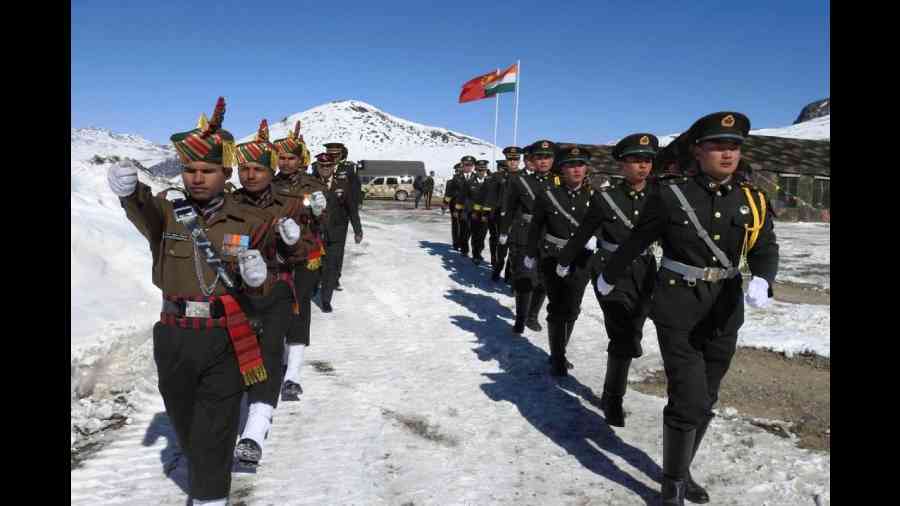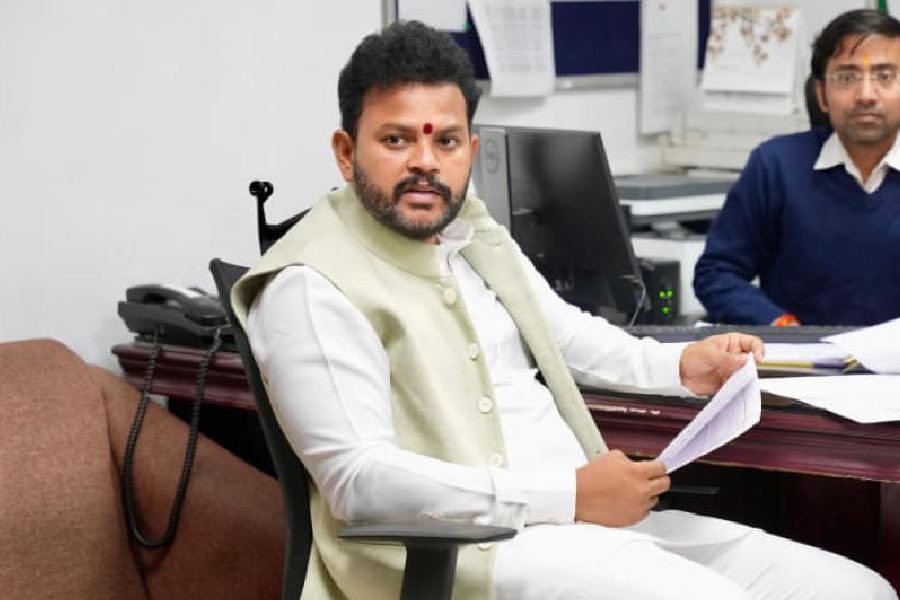When it comes to China, the world’s attention may be focused on its threatening military manoeuvres against Taiwan and the visits by various European leaders to Beijing, but for India, it is about deciphering the message China is trying to send with its recent actions. On April 2, the ministry of civil affairs in Beijing announced it would “standardise” the names of 11 places in Arunachal Pradesh, the third such list of standardised names after 2017 and 2021. It published the new list along with a map showing Arunachal Pradesh as part of China’s Tibet Autonomous Region.
A few days earlier, Bhutan’s prime minister, Lotay Tshering, gave an interview to the Belgian newspaper, La Libre, where he claimed that “there is no intrusion” by China into Bhutan and the two countries will be able to settle their boundary dispute “after one or two meetings.” A sharp response from Indian commentators earned the ire of China’s State-run media outlets, which asserted that Tshering’s interview was a victory for China and a setback for hegemonic India. On March 23, the prime minister of Bangladesh, Sheikh Hasina Wajed, inaugurated the country’s first ‘state of the art submarine base’ at Cox’s Bazar, which was made in collaboration with the Chinese who had provided two Ming class submarines to Dhaka in 2016.
Then came the news of Beijing’s decision to “freeze” the visas of two Indian journalists, asking them to not return to China. Two other Indian journalists, who remain in China, may meet the same fate. Beijing argues that its decision is a response to India taking steps against Chinese journalists. Meanwhile, Chinese diplomats in India proclaim that the situation on the border is “stable” and the two governments are bringing in “normalized management and control” at the earliest. In the least, these moves point to a hardening of the Chinese stance against India and diminish hopes of an early resolution to the ongoing border crisis.
The official Indian response to Chinese provocations is elusive, as along with the embattled Adani Group, any discussion or questions on the China border issue has been barred in Parliament and in Standing Committees. Large sections of the mainstream media follow the lead, other than providing an unquestioning platform to the external affairs minister, S. Jaishankar, to hold forth on the subject in a patronising manner. A respected diplomat in his previous avatar, Jaishankar now comes across as just another spokesperson of the Bharatiya Janata Party — partisan, defensive and self-congratulatory, who is loath to acknowledge the ground realities.
Even then, his politician’s mask slips at times. Like when he admitted, “Look, they (China) are the bigger economy. What am I going to do? As a smaller economy, I am going to pick up a fight with the bigger economy? It is not a question of being reactionary, it’s a question of common sense…” That argument lies at the core of the Narendra Modi government’s political thinking on China and dictates the strategy on the border crisis. Thisdefensive approach has been transmitted to the military leadership as well.
General Manoj Pande, the army chief, has spoken of maintaining “a strong defensive posture” on the Line of Actual Control and working with an aim to “prevent any attempts by our adversary to unilaterally change the status quo.” It is echoed by the Northern Army commander, Lieutenant-General Upendra Dwivedi, who last month proudly cited “the status quo… maintained with China on [the] LAC” as an achievement. He had earlier suggested that “we also have strategic patience and are ready to wait.”
They also serve who only stand and wait, but not in this case. China altered the status quo on the LAC in Ladakh in the summer of 2020 to its advantage. Beijing has been reluctant to discuss Depsang and Demchok, where no disengagement has taken place. In the five areas where soldiers have moved a few kilometres apart after disengagement, China has refused to discuss any plans for de-escalation. It has simultaneously constructed massive military infrastructure in border areas, building on the advantage it already had over India.
The new status quo, which the army is maintaining, is such that Indian patrols are unable to access 26 of the 65 patrolling points in Ladakh that they could regularly reach before 2020. Some of these patrolling points are on the Indian side, far short of the LAC. The police officer who presented this report at a top-level security conference in Delhi also claimed that civil administration officials are being stopped by the army from going to the Karakoram Pass because of China’s objections. Local elected councillors have made similar claims about the army blocking graziers from going to their traditional grazing areas in Demchok.
In the initial weeks of the Ladakh border crisis, the aim of the government was to restore the status quo as it existed in April 2020. It was in tune with the goal of previous governments in any border crisis with China, the 2013 Depsang crisis being a prime example. The restoration of status quo ante is done by diplomatic negotiations after the army creates a strong negotiating position by launching a quid pro quo operation into Chinese-controlled territory. The Chinese foreign ministry spokesperson has flatly refused any return to status quo ante, a statement that did not even earn a rebuttal from the Modi government. Driven by this timorous attitude, India’s extensive military deployment — not only in Ladakh but also in Arunachal Pradesh, Sikkim, Himachal Pradesh, and Uttarakhand — is only to prevent any further loss of territory.
Former US officials, who were dealing with India when the Ladakh border crisis began, have gone on record in recent days about the help the Donald Trump administration provided. Christopher Johnstone, a former Pentagon official, said that “quite a bit was done to support India during the border clash, including making available to India MQ-9 drones for surveillance purposes. The drone leasing arrangement was complicated, but the administration worked very hard to make that happen quickly, to provide India with additional sort of intelligence collection capability. And there were other things that were done that are classified.” Another former White House official, Lisa Curtis, has co-authored a report where she argued that “senior Indian officials have noted privately that U.S. support for India during the crisis had a profoundly positive impact on India’s ability to defend its borders.” The report says that “Indian officials probably believe they would be able to reach out and obtain substantial support from the United States in the event of another potential border crisis.” But her report warned the American decision-makers that the Modi government “clearly wants to convey to its people that India alone can handle military operations competently and successfully, even in a wartime scenario.”
When Curtis states that the current dispensation in New Delhi “might not want its public to know the full extent of PLA activities in disputed areas as this might become fodder to protest government incompetence or inaction,” it tells us of the leverage foreign governments can have over a political leadership that wants to keep Indians in the dark. The Joe Biden administration may not be banking upon New Delhi to fight alongside in the trenches, but it is intent on persuading India to remain a major obstacle to Chinese designs. Today’s menu of unappetising choices before India is a direct consequence of the Modi government’s China policies, all formulated with an aim of saving its domestic face.
In the past three years, India has lost control of territory to China, lost respect and influence in South Asia, and runs the risk of having its hand being forced by the United States of America. That is the net sum of what the ongoing border crisis with China has achieved so far.
Sushant Singh is Senior Fellow at Centre for Policy Research, New Delhi










